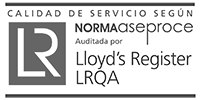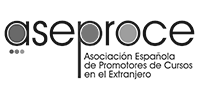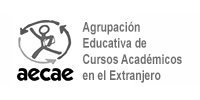Schools of United Kingdom for secondary school academic year
Types of schools in England
The classification of schools in England, Wales and Scotlandis often somewhat complicated by its nomenclature and the changes of recent years for the parents of our students, and therefore we will try to clarify and classify the schools in the United Kingdomin a simple and schematic way, explaining the similarities or equivalences with the Spanish educational system, or their differences.
Education in Englandand Walesis usually divided into two different phases. Primary educationwhich begins at age 5 and ends at age 11 and secondary educationwhich starts at the age of 11 and ends between the age of 16 and 18.
The main categories of schools are:
- State Schoolswhich are free for all children between the ages of 5 and 16 and are funded by central governments or local authorities.
- Independent Schoolsand within the independents are the private schools and those still called for historical reasons "public schools" (Private / Public Schools). These are all schools in which parents pay for the education of their children, whether totally, partially, or voluntarily.
State Schools
In England and Wales 93 percentof children go to state schools. State schools are subsidized by the tax system and most are administered by local authorities.
These state schoolsin most cases follow the national curriculum but according to their categories are more or less free to change some aspects.
Parents have to make sure that their children bring school supplies such as notebooks, pens and pencils, erasers, pencil sharpeners, etc., but the cost of books, exam fees and other materials. specialized are covered by the school.
Although parents have to pay for their children’s uniform and sports uniform, they must also pay for music lessons, accommodation costs for boarding, extracurricular trips or excursions. that makes the school. The school could also request the payment of a voluntary fee to cover expenses of other activities, however no child would be left out of performing these activities if the parents or guardians can not contribute.
Primary Schools (Primary schools - 5 to 11 years old)
In Britain the first level of education is known as primary education. almost all schools are mixedand are located near the student’s home. Children are usually in the same group all day and one teacher usually teaches the same group.
Teachers try to motivate parents to do their homework with their children at home, and from the first course they are given a small amount of work at home.
Secondary Schools (Secondary Schools - 11 to 18 years)
Most children go to high school at 11 years of ageand usually go to the nearest school, although the law allows parents in England and Wales express their preferences for other schools. ? If there are places available in other schools, they must respect the place for the applicant. However, if there are more applications than places, the selection criteria applied in the area will be followed and these criteria may vary according to the different areas of the country.
Most high schools are mixedand are usually larger than elementary schools. 88 percent of high school students in England and Wales tend to attend schoolsof comprehensivetype. These schools provide education for children with all kinds of skills in their district between 11 and 18 years. In Scotlandthey are often referred to as non-selective schools. Students attend 4 types of schools in this category:
- The schools called Community Schoolsare purely the public schools of our system, and whose buildings, land and staff are controlled and financed by the City Council or Municipality of your locality and are not affected by any financial group or religious in his administration or organization.
- Schools called Foundation Schools, are schools with a greater degree of freedom to organize their academic programs and administration than Community Schools. They can also independently negotiate salaries for teachers and employees and define their dates and schedules. These colleges are owned by their own governing bodies or charities.
- Schools called Free Schoolsare non-profit schools and therefore are usually subsidized or created by NGOs, universities, religious groups, teachers, businesses or other independent schools. It is a type of school that was introduced into the British educational system after the 2010 elections by the coalition formed by liberal-conservatives and democrats.
- Schools Grammar Schoolsare selective and specialize in specific subjects or areas. Normally the entrance in these schools is usually done through an exam and are usually separate sexes schools, that is, the children attend a Boys Grammar School and the girls attend a Girls Grammar School.
- Schools called Controlled Aided schools, which are usually associated with a church. The land and buildings are usually owned by their governing body or associated church. These schools do not control the election of their staff or the admission processes, despite being owners of their land. The schools called State Boarding Schools, which are a type of schools that are very common in Englandand that are State Schools (free) in the academic part , but deprived in terms of the accommodation regime they offer, and therefore the schools are free to mark their own accommodation rates. Some of these schools are administered by local governments, and others function as Academies or Foundation Schools.->
Independent Schools (Independent Schools)
These schools are divided into Private schoolsand Public schools, although the latter name has to be discontinued. , and the concept of public school in England should not be confused with ours. Free schools in the United Kingdom are often referred to as state schools or "state schools" as previously mentioned. The term of Publicin England would correspond in some cases more with the concept of concerted schoolin Spain, that is subsidized by the central government but with a certain degree of independence in the voluntary rates and internal organization. The classification that we have made in GMR is of a personal style, in which we have separated the schools by their independence in management and curriculum, and not in the state subsidies, and for that reason, others could classify of another form (all the included types in another category called state-funded schools, and privatealone apart).
The payment colleges according to age usually also have their denomination like this:
- Nursery / Kindergarten, from 2 to 3 or 4 years old would be our nursery
- Pre-preparatory Schools, from 3 or 4 to 7 years old, would be our "early childhood education"
- Preparatory Schools, from 7 to 11 or 13 years old
- Public Schools and Private Schools, from 11 or 13 to 18 years old
Prep Schools
High schools are independent primary schools designed to prepare students for entry into an independent public or private high school.
Independent Public Schools
These are independent high schoolsthat are not managed by the Ministry of Education or local authorities. They usually do entrance exams what children do at 13 and girls at age 11 and are called the Common Entrance exams. These schools can be:
- The so-called Academiesschools, which are run by a government body independent of the town council and can follow a curriculum different from the national one or personalized. The schools of this type are subsidized directly by the government and not by the City Council and can have their own sponsors as companies or groups of parents to improve their academic results or make improvements in the facilities. These schools have to follow the model of state admission in addition to special education and exclusion of students to be subsidized by the central government. It’s the closest thing to an arranged school.
- Schools called Voluntary Aided schools, which are usually associated with a wide variety of organizations. They can be religious colleges (often from the Church of England- Church of England, or the Roman Catholic Church- Roman Catholic Church), and also Colleges without denomination or faith associate, such as those associated with the London Livery Companies. The charitable contributions and voluntary contributions of the parents are part of their financing, and the land and buildings are usually owned by their governing body or association or religious faith. These colleges control both the election of their personnel and the admission processes, despite being subsidized by the local or central government. The aforementioned State Boarding Schools, but those that function as Academies or Foundation Schools.
Independent Private Schools
The remaining 7 percent of children in England attend independent private fee-paying schools. These are secondary schoolswhich are financed through the fees paid by parentsinstead of funds from the Ministry of Education and students do not have to follow the national curriculum. all private schools must be registered with the Ministry of Education and are surely inspected by it. Many of them have worldwide prestigeand receive students from all over the world and often offer the option of Internship.
Inspection bodies and accreditations
Inspections of the OFSTED
It is often referred to in the descriptions of our schools, the results of inspections of the OFSTED, but what do these acronyms mean?
Ofsted is the "Office for Standards in Education", or ’Office of Standards in Education, Services for Children and Skills’. It is a non-governmental organization to support its independence from politics, and its managers and top inspectors are not therefore politicians, but experts in education.
These inspectors assume responsibility for the inspection of education in all schools in England.




